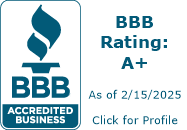
Analysts at Goldman Sachs Group Inc. recently announced that commercial properties are overvalued by 16%. Shortly after Wells Fargo Chief Executive Officer Tim Sloan went on television, saying some deals looked “frothy” and that his bank was pulling back. (Bloomberg). Why are banks worried about the commercial market when default rates are at their lowest in a decade and the economy continues to grow? Is a bubble brewing in commercial real estate?
Values
According to Real Capital Analytics commercial property prices are almost double what they were at the bottom of the market in 2010. Unfortunately, rents have not doubled which means the returns on the properties have fallen substantially; aka cap rates have taken a nose dive.
Capitalization rate (Cap rate)
Cap rate is basically the return on investment of a property (yield) and is the favored metric for evaluating a commercial property. In simplistic terms it is the return an investor could expect after expenses. For example, if an investor were buying an apartment complex in Denver, the cap right might be 3 or 4%. Cap rate is calculated by dividing Net Operating income (revenue-expenses (note do not include mortgage expenses)) by the buildings value. To change the value of a property there are basically three variables: Rents (income), Expenses (like utilities, maintenance, management, etc…), and there is cap rate. Rents are moving higher but not enough to double the value of a property. Expenses have been rising as labor costs increase, insurance increases, etc… The third variable cap rate is where the vast majority of movement is taking place.
Major assumption
When investors buy property at very low cap rates the expectation is that they will raise rents to improve their yield. For example, an investor might buy an apartment complex in Denver with the expectation that they can raise rents from 1500 to 1800 per unit. If they can increase rents substantially the capitalization rate (return on investment) will increase. If rents are unable to be raised sufficiently then the investor is “stuck” with a low yielding asset. For example, many buildings were recently bought at 2% cap rates. A 2% return is less than stellar as the 10-year treasury is 3.2% now and the return is 21% in the S&P 500.
Cap rates move with 10-year treasuries
With the low interest rate environment, the US has been in for years, there has been a large flight to higher yielding quality assets. When the 10-year treasury was at 1 or 2% investors would instead invest in real estate as an alternative to bonds; commercial real estate for the most part is a “safe asset”. For example, in July of 2017, the 10-year treasury yield was 1.3%. Why wouldn’t someone invest in commercial real estate with a return of 3%? Currently the 10-year treasury is approximately 3.2% with the prediction that yields will reach 4% sometime next year. As 10-year treasuries rise investors will demand higher returns and trade out of commercial real estate just as they traded into commercial real estate when yields were at historical lows. As treasury yields rise cap rates will also rise. For example, why would someone buy a property at a 3% cap rate when they can do nothing and buy a bond yielding over 3.2% that is backed up by the federal government?
Will the bubble burst?
Commercial real estate in many markets has gotten ahead of itself as cap rates declined to historic low levels. At the same time cap rates are rising, rents are tapering off in many sectors which is a double whammy to commercial real estate values. These two changes will no doubt lead to an adjustment in prices downward of commercial real estate.
Commercial real estate will go through and adjustment as opposed to a sudden drop in values. The adjustment will take place as prices drift lower over the next several years as treasuries continue to rise and rents stagnate. On the flip side, it is important to remember that commercial real estate overall is an attractive investment and a good “hedge” against market volatility. As market volatility increases and another cycle begins there will once again be a flight to quality “hard” assets like commercial real estate. Although there will be downward trends in prices in commercial real estate over the next several years I don’t see any impending “cliff drop” in values.
Resources/Additional Reading
- https://www.bloomberg.com/graphics/2018-commercial-real-estate-bubble/?srnd=premium
- https://www.rcanalytics.com/rca-insights/
I need your help!
Don’t worry, I’m not asking you to wire money to your long-lost cousin that is going to give you a million dollars if you just send them your bank account! I do need your help though, please like and share our articles it would be greatly appreciated.
Written by Glen Weinberg, COO/ VP Fairview Commercial Lending. Glen has been published as an expert in hard money lending, real estate valuation, financing, and various other real estate topics in the Colorado Real Estate Journal, the CO Biz Magazine, The Denver Post, The Scotsman mortgage broker guide, Mortgage Professional America and various other national publications.
Fairview is a hard money lender specializing in private money loans / non-bank real estate loans in Georgia, Colorado, Illinois, and Florida. They are recognized in the industry as the leader in hard money lending with no upfront fees or any other games. Learn more about Hard Money Lending through our free Hard Money Guide. To get started on a loan all they need is their simple one page application (no upfront fees or other games).
